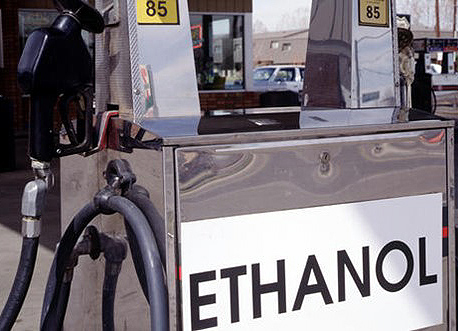E15 Ethanol-Gas And Why You Should Care
The California Air Resources Board has told the American Motorcyclist Association that even if it approves the sale of the new E15 ethanol-gasoline blend in California, the blend wouldn’t appear in the market for several years.

If you’re wondering why this is important- consider this:
Ethanol has been steadily being incorporated into the gasoline we buy from pumps all around the nation throughout the past few years. This would be fine except for one little snag- Ethanol (E10) consumption in an engine is approximately 51% higher than that of gasoline (since the energy per unit volume of ethanol is 34% lower than pure gasoline). In other words, we’re getting a lot fewer miles per gallon in our cars burning gas/ ethanol blends and much bigger issues in our ATVs.
ATVs, UTVs and other small engines (mowers, saws, snow blowers etc.) are particularly sensitive to the effects of ethanol for several reasons- the first of which lies in the fact that ethyl alcohol has the damaging habit of drawing in and collecting water from the very atmosphere itself; a principle reason it is unable to be shipped through pipelines like gasoline.
This means that gas/ ethyl blends become less and less efficient the longer they are stored. Whether in your gas can or the tank of the ATV itself, every moment blend fuel sits, it becomes more and more water-diluted.
If that weren’t bad enough, ethanol blends tend to separate naturally. In other words the gasoline components and the alcohol do their best “water & oil” impression in your quad’s tank. If caught while still in your gas can, some vigorous shaking may be enough to get the blend remixed before use. However, if this separation happens within your ATV’s fuel tank or worse still, in the carburetor, you could face major headaches, as ATVs are not designed to run on concentrated alcohol alone.
Finally, and perhaps the biggest risk, comes in the form of alcohol’s tendency to dissolve rubbers, plastics and polymers. In the event that you’ve never followed the fuel path of your ATV, let us assure you that it is a voyage primarily through precisely such materials from start to finish (plastic fuel tank, rubber fuel lines, rubber-sealed carburetor and so on).
The AMA has repeatedly expressed concerns to government officials and federal lawmakers about possible damage to motorcycle and ATV engines caused by the inadvertent use of E15 when the new fuel becomes widely available, and has asked that motorcycles and ATVs be part of any scientific study into the effects of E15 on engines.
Ethanol is essentially grain alcohol produced from crops that is mixed with gasoline to produce an ethanol-gasoline blend motor fuel. In October 2010, the EPA approved the use of E15 in model year 2007 and newer light-duty vehicles (cars, light-duty trucks and medium-duty passenger vehicles). Then, in January 2011, the EPA added model year 2001-06 light-duty vehicles to the approved list.
This is all based on concern about potential misfueling of E15 into motorcycles and our all-terrain vehicles. E15 is a gasoline formulation that contains up to 15 percent ethanol, and the federal Environmental Protection Agency hasn’t approved its use in motorcycles or ATVs.
To avoid misfueling, the EPA is requiring warning labels on gas pumps and requiring all consumers buy at least four gallons of gas when they buy from blender pumps. A blender pump dispenses different fuel blends through the same hose.
